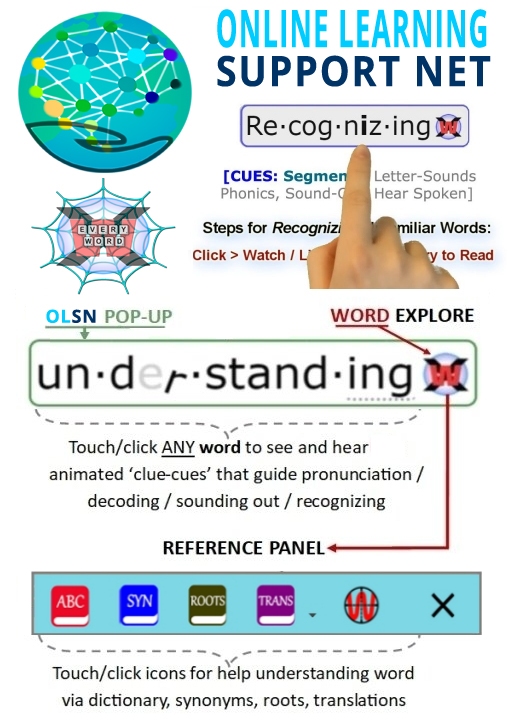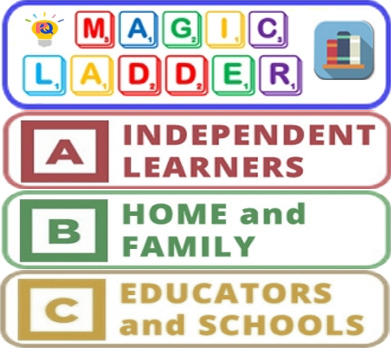Health and Literacy
Something like 60% of poor children don’t get medical exams even though they’re allowed to have them for free…What you find are large numbers of people who can’t meet their own health needs or the health needs of their children simply because they can’t read the information that they need… It’s something like 40% of hospitalizations are unnecessary and tend to be with low literacy people that really could have been prevented with better information or higher literacy. – Timothy Shanahan, Past-President (2006) International Reading Association; Member, National Reading Panel; Chair, National Reading Panel; Professor and Director, University of Illinois at Chicago Center for Literacy Unpublished COTC Interview
Note: Remember to click on any word on this page to experience the next evolutionary step in technology supported reading.
Literacy and Longevity
Children who are failing at reading at the end of the first grade are extremely likely to be failing at reading at the end of fourth grade. And failure in reading strongly predicts failure in all other academic subjects. So, a child who is not breaking the code well, who has not figured it out, who is falling behind, is a child whose academic life course is at risk and because of that whose life is at risk because the economic opportunities of life.
Again, at the lower end of the dimension are ones that have profound effects on not only obvious things: quality of life dimensions, how much money one earns, or the neighborhood one lives in, but actually have effects on longevity, on how long you will live.
So, reading again, is absolutely fundamental. It’s almost trite to say that. But in our society, as it is structured, the inability to be fluent is to consign children to failure in school and to consign adults to the lowest strata of job and life opportunities.
Grover (Russ) Whitehurst, Ex-Director (2002-08), Institute of Education Sciences, U.S. Department of Education. Source: COTC Interview:http://www.childrenofthecode.org/interviews/whitehurst.htm#allbutFated
Seventy Billion a Year
The American Medical Association has a major effort now to try to support health literacy among their patients because of the increasing costs to the health system for people who don’t understand the prescriptions that they’re given, they don’t understand how to take their medications. They don’t understand the diagnoses that are given to them by their doctors and the instructions that are attendant to those diagnoses. It’s estimated that we spend over seventy billion a yearunnecessarily for people making special trips to the emergency room or extra trips to the doctor because they failed to understand the health issues that they have to deal with in their lives.
Robert Wedgeworth, Past-President, ProLiteracy Worldwide; Former Executive Director, American Library Association. Source: COTC Interview :http://www.childrenofthecode.org/interviews/wedgeworth.htm#EconomicConsequences
Low Literacy, Civic Participation and Health
Dr. Timothy Shanahan: …One interesting analysis done with adults who are low in literacy is that low literacy individuals are less likely to read a newspaper than a high literate person. But, of course, these folks could still participate by getting information from television and have radio. There’s absolutely no reason why a low literacy person wouldn’t be able to access a lot of the information that is available over those media.
Except it turns out that lack of literacy has an isolating effect. What happens is low literacy people are less likely to watch informational shows on television, they’re less likely to watch news, for example, than other kinds of television.
David Boulton: How can they navigate?
Dr. Timothy Shanahan: Exactly. They just don’t pay attention to stuff like that which means, they miss out on information about the candidates and elections and so on, but they also miss out on the large amount of health information that is on television news and so on. They don’t find out about the free pap smears down at the clinic. They don’t find out about the new statistics on smoking. They don’t find out about how to take care of their children better. And so their kids are at greater risk in all kinds of ways and they themselves are at greater risk.
Timothy Shanahan, Past-President (2006) International Reading Association; Member, National Reading Panel; Chair, National Reading Panel; Professor and Director, University of Illinois at Chicago Center for Literacy. Source: COTC Interview – http://www.childrenofthecode.org/interviews/shanahan.htm#LowLiteracyCivicParticipationHealth













